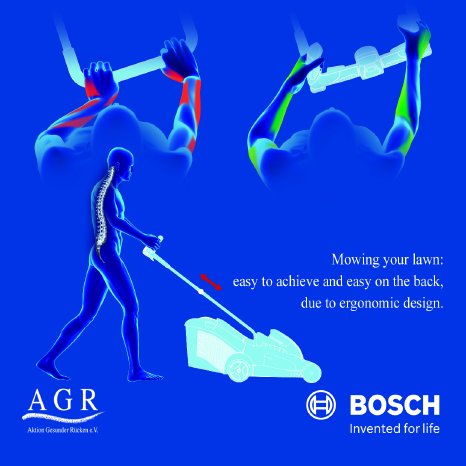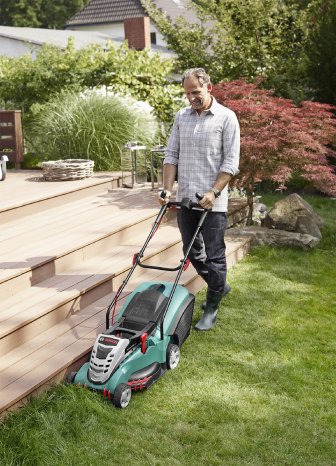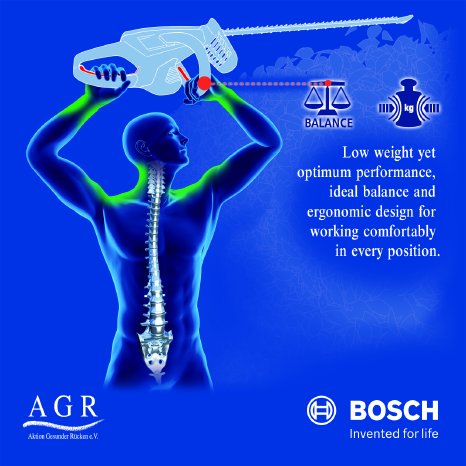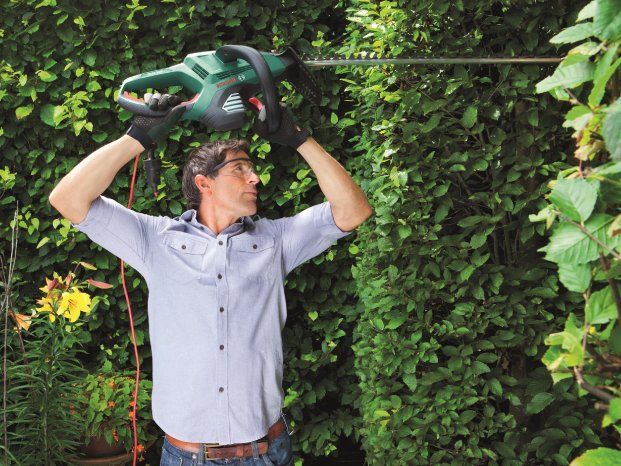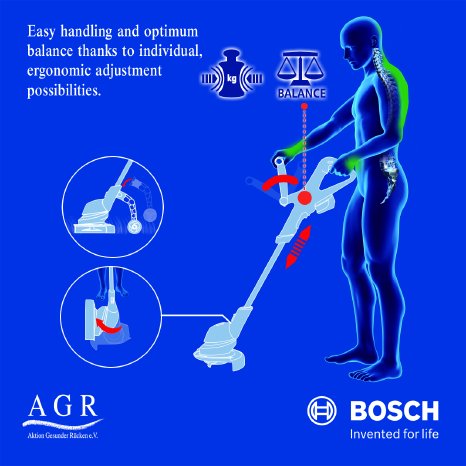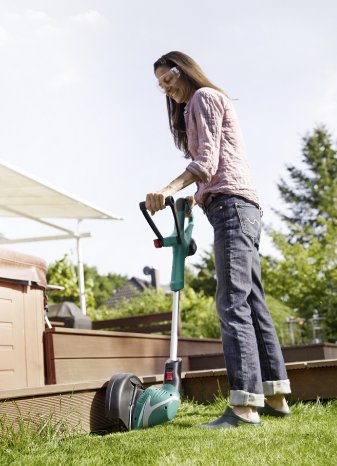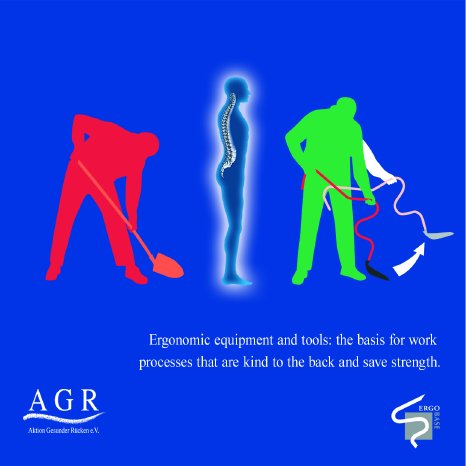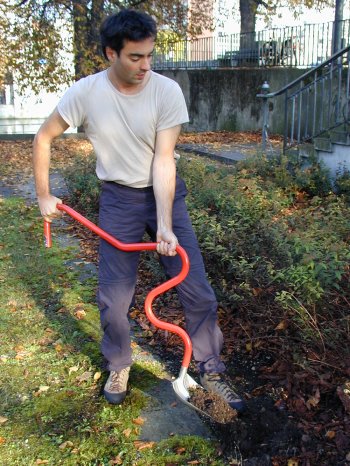Mr. Kuhnt, even Angela Merkel does gardening to relax. Why does it make us feel good to sow seeds and plant and dig around in the soil with our hands?
Angela Merkel and most professionals spend most of their time working with their brains. We answer emails, write texts, create spreadsheets or spend time on the telephone. In the modern world of work we are mainly challenged mentally; practical work with our hands often falls by the wayside. Gardening gives us a welcome change of pace. It allows us to be physically active, to feel our muscles and move about in the fresh air. In the garden we are our own bosses and this feeling is liberating and relaxing.
How does our psyche influence back health?
Satisfaction in the workplace and in the private sphere is an important precondition for a healthy back. Psychological factors such as stress, fear, anger, worries or depressive moods can trigger muscle tension in the neck, in the shoulders or in the back. The psyche also has a significant influence on back pain. A positive attitude towards life and mental balance not only increase general wellbeing but at the same time also protects us from the risk of back pain becoming chronic.
Pulling, yanking, sowing and pruning are not exactly back-friendly activities. Gardening without back pain - is that even possible?
Garden work in itself is not harmful to the back. On the contrary: physical activity is good if we use our heads. We train our muscles and make our lives more gratifying. But our mental attitude is always critical. Take it easy and don't overdo it. Just enjoy yourself and have fun.
What should I pay attention to when working in the garden?
Gardeners often get themselves into bad postures. Instead of maintaining the natural curve of the spine when bending over and lifting, it is kept in a bent position for long periods of time. Even monotonous work done for hours can have unpleasant consequences. It is important to be aware of the movements performed when gardening and to make them as back-friendly as possible. How do you do that? First: pay attention to posture and movement patterns. When lifting or carrying a heavy flower pot, for example, you should use your leg muscles and avoid twisting movements in the back. Heavy loads can be distributed by carrying two small watering cans instead of one big one, for example. When pruning branches at ground level, it is a good idea to go into a crouching position to avoid keeping your back bent over for a long time. When working bent over for a long time, whilst pulling weeds, for example, you should kneel down.
Second: everybody should be aware of how to approach the work. I recommend starting out with warming up exercises and taking care of the easy tasks first so as not to put your body under too much strain at the outset. My message: not much steady, heavy work at first, lots of dynamic movements, varied activities.
You should also not feel that you have to get all the work completed on one day. After all, garden work should not be a burden but a pleasant physical activity.
Which garden tools are recommended?
Work with back-friendly garden tools whenever possible. Use tools with long handles or telescoping handles that can be adjusted to individual body heights. These tools make it easier to maintain an upright back posture. They should also not be too heavy. A light material is recommended. And the shovel blade should be on the small side so you don't have to move unnecessarily large amounts of soil at one time.
The weight of the garden tools is also important when using cutting tools. Light hedge shears should be used, for example.
Weed containers should have wheels. The same applies to flower boxes that have to be transported to the cellar for the winter, for example. You can also attach handles to these boxes later.
If you work while kneeling you should use a garden kneeler or knee pad. Some activities can also be done in a sitting position. Avoid a bent over posture for long periods because bending over frequently and for long periods creates the greatest strain on the back muscles.
Raised beds are also very practical. They make it possible to conduct all planting, care and harvesting work in a standing position.
What should I consider when buying a lawnmower?
To prevent back pain, tension and overstressed joints, a lawnmower should meet the following prerequisites: the length of the handles must be adjustable so that the mower can be adapted to various body heights. Because only an upright stance will help ensure carefree mowing. The handles should also be shaped ergonomically to avoid strain on the wrist joints. It also relieves strain on muscles and joints when various grips are possible (see image). The lowest possible deadweight is also recommended - between eleven and 15 kilos is ideal - as well as special carrying handles that make transport easier. Pioneers in back health matters are the many Bosch garden power tools (www.bosch-garden.com) such as the battery-driven and corded electric lawnmower "Rotak" (starting at about EUR 170). These mowers were awarded the "Approved & Recommended" seal of approval by the Campaign for Healthier Backs (AGR) e. V., which is a quality attribute of especially back-friendly products, also featured by the electric hedge shears AHS 65-34 (about EUR 220) and AHS 70-34 (about EUR 240) as well as the ART 26-18 LI grass trimmer (about EUR 90) and ART 23-18 LI (about EUR 120). The effortless handling, its light weight and the ergonomic form of these garden power tools make work a breeze and prevent incorrect gripping.
Which implements make digging and loosening soil easier?
Ergonomic tools also excel when it comes to weeding, raking, setting onion bulbs or shoveling. Tools with curved handles, for example, are good for the back. The garden tool manufacturer Ergobase specializes in precisely these features. The key: thanks to its "S" shaped grip, these tools are ergonomically perfectly adapted to the needs of the gardener. The long handled design protects the back, prevents incorrect loads and generates the perfect leverage for all motion sequences. The Ergobase shovel and the Gartenboy (about EUR 80 each, www.ergobase.com), a multifunctional implement for fork, rake and chopping work are therefore recommended by the Campaign for Healthier Backs (AGR) e. V. and bear the AGR seal of approval.
What should I do if I notice that I'm getting back pain?
In this situation you should change your posture or work load. You should take a break from or stop especially back-straining activities, such as carrying bags of soil, pushing a wheelbarrow, digging out roots, double-digging a garden bed. Take the strain off your back by sitting down on a bench or resting in a deck chair.
What should I do to have a healthy back?
Therapeutic gymnastics makes sense. Stretching, standing up, doing stretching exercises and shaking the wrists relaxes the muscle groups. With stomach and back exercises you can get in shape at home, regular bike riding or swimming also strengthens the muscles.
The right clothing is also very important. Use the layered clothing principle. You should start with warm clothing, then gradually remove one piece of clothing after another. Sweaty clothing is poison for the back, rain protection and sturdy shoes are a must.
In a nutshell
Gardening without back pain - is it possible? Sure it is! You should only use ergonomic implements when raking, weeding and pruning. The Campaign for Healthier Backs (AGR) e.V. has approved a number of back-friendly garden tools. The "Certified & Recommended" seal of approval was awarded to the tools manufactured by Ergobase as well as to numerous Bosch garden implements. They reduce strain and go easy on the back and joints.
You can also find further information on back-friendly garden tools and other back-friendly products with the AGR seal of approval at www.agr-ev.com.
